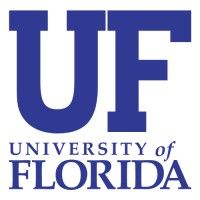预约演示
更新于:2025-05-07
青霉素结合蛋白2
更新于:2025-05-07
基本信息
别名- |
简介- |
关联
4
项与 青霉素结合蛋白2 相关的药物靶点 |
作用机制 青霉素结合蛋白2抑制剂 |
在研适应症 |
非在研适应症- |
最高研发阶段临床前 |
首次获批国家/地区- |
首次获批日期1800-01-20 |
作用机制 青霉素结合蛋白2抑制剂 [+1] |
原研机构 |
在研适应症 |
非在研适应症- |
最高研发阶段临床前 |
首次获批国家/地区- |
首次获批日期1800-01-20 |
作用机制 青霉素结合蛋白1A抑制剂 [+2] |
在研适应症 |
非在研适应症- |
最高研发阶段临床前 |
首次获批国家/地区- |
首次获批日期1800-01-20 |
3
项与 青霉素结合蛋白2 相关的临床试验NCT05645757
A Phase 1, Randomized, Double-Blind, Placebo-Controlled, Dose-Escalation Study to Evaluate the Safety, Tolerability, and Pharmacokinetics of Intravenous Ertapenem in Combination With Zidebactam (WCK 6777) In Healthy Adult Subjects
This is a Phase 1, single center study to investigate the safety, tolerability, and pharmacokinetics (PK) of three dose-level groups of WCK 6777 (ERT and ZID combination), and two dose-level groups of ERT alone and ZID (WCK 5107) alone in 52 healthy adult male and female subjects aged 18 to 45 years old (both inclusive). Seven treatment cohorts will be evaluated in this study. WCK 6777 will be evaluated in three cohorts - Cohorts 1, 4 and 7- of 8 subjects each (6 study drug combinations and 2 placebos); ERT will be evaluated alone in two cohorts - Cohorts 2 and 5- of 8 subject each (6 ERT and 2 placebos); and ZID will be evaluated in two cohorts, Cohorts 3 and 6, of 6 subjects each (all ZID). The study will be placebo-controlled and double-blinded in all cohorts except Cohorts 3 and 6. No placebo subjects are included in standalone ZID cohorts, since adequate safety data for higher doses of ZID alone in comparison with placebo are available from completed Phase 1 studies of WCK 5107 (ZID) alone and the ZID-only arms of WCK 5222 (cefepime + ZID) studies. The primary objective is to assess the safety and tolerability of three dose-escalating regimens of WCK 6777 ( ERT and ZID combination) and two-dose escalating regimens of standalone ERT or ZID following single daily doses for 7 days in healthy adult subjects.
开始日期2023-04-19 |
NCT02674347
A Randomized, Double-Blind, Placebo-Controlled Study to Evaluate the Safety, Tolerability and Pharmacokinetics of Multiple Escalating Doses of Intravenous Zidebactam in Healthy Adult Human Subjects
Study to evaluate the safety and tolerability of multiple escalating doses of intravenous (IV) Zidebactam in healthy adult human subjects.
开始日期2016-02-01 |
申办/合作机构  Wockhardt Ltd. Wockhardt Ltd. [+1] |
NCT02532140
Phase I Randomized, Double-Blind, Placebo-Controlled Study to Evaluate the Safety, Tolerability, and Pharmacokinetics of WCK 5107 Alone and in Combination With Cefepime Administered as Single IV Doses in Healthy Human Volunteers
• To evaluate the safety,tolerability and pharmacokinetics of single intravenous doses of WCK 5107 alone and in combination with cefepime in healthy adult human subjects.
开始日期2015-08-01 |
申办/合作机构  Wockhardt Ltd. Wockhardt Ltd. [+1] |
100 项与 青霉素结合蛋白2 相关的临床结果
登录后查看更多信息
100 项与 青霉素结合蛋白2 相关的转化医学
登录后查看更多信息
0 项与 青霉素结合蛋白2 相关的专利(医药)
登录后查看更多信息
589
项与 青霉素结合蛋白2 相关的文献(医药)2025-06-01·Journal of Infection and Public Health
Genomic approach to evaluate the intrinsic antibacterial activity of novel diazabicyclooctanes (zidebactam and nacubactam) against clinical Escherichia coli isolates from diverse clonal lineages in the United Arab Emirates
Article
作者: Alshamsi, Maitha ; Alzaabi, Abdulrahman ; Al-Marzooq, Farah ; Oommen, Seema ; Almansoori, Hamad ; Alsaadi, Abdullah ; Aleissaee, Omar ; Aldhaheri, Rauda ; Collyns, Timothy ; Daoud, Lana ; Ahmad, Amna ; Ahli, Hafsa ; Ghazawi, Akela
2025-06-01·International Journal of Antimicrobial Agents
Multiomics informed mathematical model for meropenem and tobramycin against hypermutable Pseudomonas aeruginosa
Article
作者: Yadav, R ; Boyce, J D ; Deveson-Lucas, D ; Agyeman, A A ; Rees, V E ; López-Causapé, C ; Shin, B S ; Landersdorfer, C B ; Tait, J R ; Rogers, K E ; Oliver, A ; Nation, R L
2025-05-01·Antonie van Leeuwenhoek
Paracoccus yibinensis sp. nov., a novel bacterium with astaxanthin producing isolated from the environment of Chinese distilled Baijiu
Article
作者: Li, Xi ; Luo, Qingchun ; Zhang, Zhu ; Lu, Yanping ; Zhao, Pengju ; Gu, Yang ; Zheng, Jia ; Su, Jian ; Zhao, Dong
1
项与 青霉素结合蛋白2 相关的新闻(医药)2024-04-25
Nearly half of women will get a urinary tract infection in their lifetime. For the first time in more than 20 years the FDA has approved an antibiotic to treat the condition.
For the first time in more than 20 years, the FDA has approved a treatment for uncomplicated urinary tract infections (uUTI). And the nod has come for an oral antibiotic that has been available in Europe for more than 40 years.
It’s an odd set of circumstances and a dose of foresight by Utility Therapeutics that bring Pivya (pivmecillinam) to the market in the United States in the therapy’s golden years. The London-based company was formed specifically to develop and commercialize pivmecillinam in the U.S. where antimicrobial resistance is growing to standard of care antibiotics.
The decreased “utility” of first-line antibiotics and the void the company is attempting to fill in the U.S. were the inspiration of the name of the company. And the void is significant as more than 30 million uUTIs are diagnosed every year in the U.S., with nearly half of all women contracting the infection at some point in their life. Outside of hospital setting, UTIs account for more antibiotic use than any other disorder.
In 2018, Utility inked a licensing agreement with LEO Pharma, acquiring the U.S. rights to pivmecillinam and its subcutaneous formulation mecillinam, which the company has submitted for approval as a first-line therapy for complicated urinary tract infections (cUTI) in the hospital setting. The difference between cUTIs and uUTIs is that the former has reached the kidneys while the latter is limited to the bladder.
“The FDA is committed to fostering new antibiotic availability when they prove to be safe and effective and Pivya will provide an additional treatment option for uncomplicated UTIs,” Peter Kim, M.D., the director of the Division of Anti-Infectives at the FDA’s Center for Drug Evaluation and Research, said in a release.
The year that Utility acquired the rights to pivmecillinam and mecillinam, the FDA signed off on each as a Qualified Infectious Disease Product (QIDP). The status is extended to antibacterial and antifungal drug candidates intended to treat serious or life-threatening infections. When a QIDP treatment is approved, it gains an additional five years of market exclusivity.
On the same day in January, when Utility revealed that the FDA had accepted the company’s new drug applications for pivmecillinam and mecillinam, it also announced it had received private funding from the AMR Action Fund. The global initiative—which was established by several prominent drugmakers including Amgen, Bayer, Eli Lilly, GSK, Novo Nordisk and Roche—invests in the development of new antimicrobial therapeutics.
In addition to being a prodrug, which means that it is not pharmacologically active until it is digested and absorbed into the system, Pivya has a unique mechanism of action, targeting penicillin binding protein-2 in the cell wall of gram-negative bacteria.
Pivya’s efficacy was assessed in separate trials versus placebo, an oral antibacterial and ibuprofen. The primary measure of efficacy in the studies was the composite response rate, which included clinical cure (resolution of the symptoms of the uUTI that were present in patients at trial entry and no new symptoms) and microbiological response (demonstration that the bacteria cultured from patients’ urine at trial entry was reduced).
In the placebo trial, 62% of the participants who received Pivya achieved composite response compared to 10% of those on placebo. In the oral antibacterial trial, 72% of the subjects who received Pivya achieved composite response versus 76% of those on the comparator. In the third trial, 66% of the subjects who received Pivya achieved composite response compared to 22% of those on ibuprofen.
Commonly prescribed drugs for uUTIs in the U.S. are bactrim (sulphamethoxazole/trimethoprim), nitrofuranatoin and fluoroquinolones. But more than 1 in 5 who receive these are resistant, which can lead to progression of the disease, including life-threatening sepsis.
Last month, Germany’s Allecra Therapeutics scored FDA approval for its antibiotic Exblifep, which is a combination of cephalosporin antibacterial cefepime and the beta-lactamase inhibitor enmetazobactam, to treat cUTI. The approval came days after the U.S. regulator rejected another combo therapy in the same indication from Venatorx Pharmaceuticals and Melinta Therapeutics.

引进/卖出上市批准临床结果
分析
对领域进行一次全面的分析。
登录
或

Eureka LS:
全新生物医药AI Agent 覆盖科研全链路,让突破性发现快人一步
立即开始免费试用!
智慧芽新药情报库是智慧芽专为生命科学人士构建的基于AI的创新药情报平台,助您全方位提升您的研发与决策效率。
立即开始数据试用!
智慧芽新药库数据也通过智慧芽数据服务平台,以API或者数据包形式对外开放,助您更加充分利用智慧芽新药情报信息。
生物序列数据库
生物药研发创新
免费使用
化学结构数据库
小分子化药研发创新
免费使用




